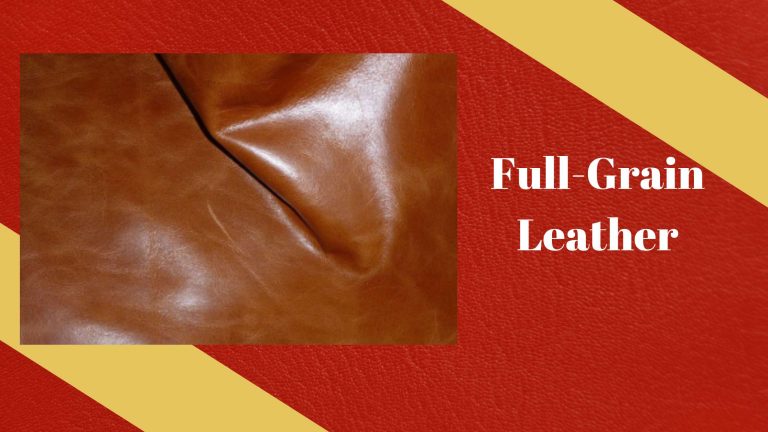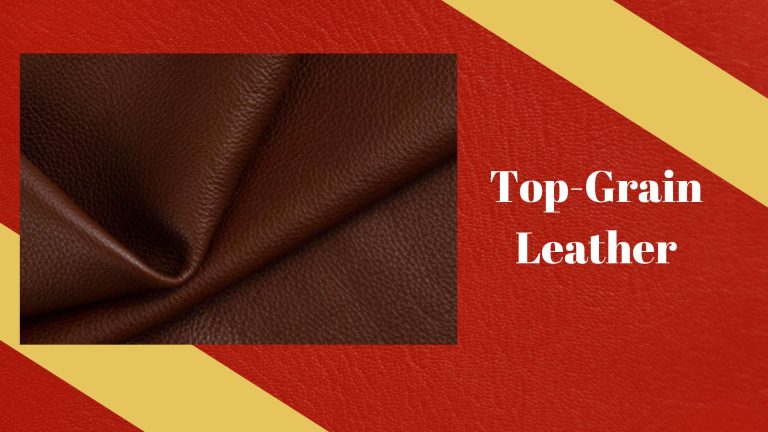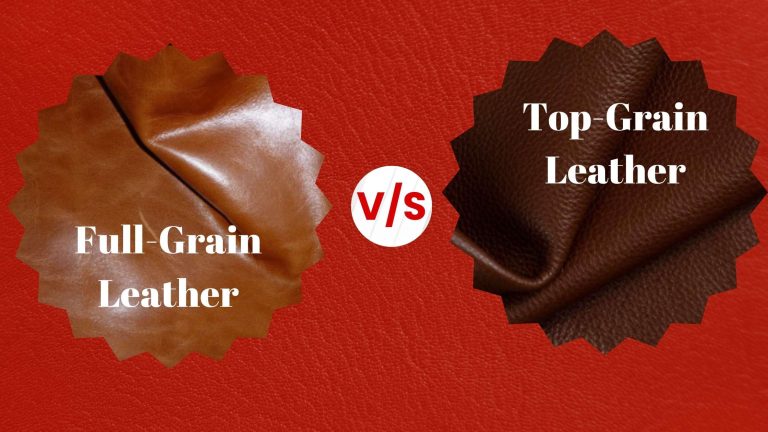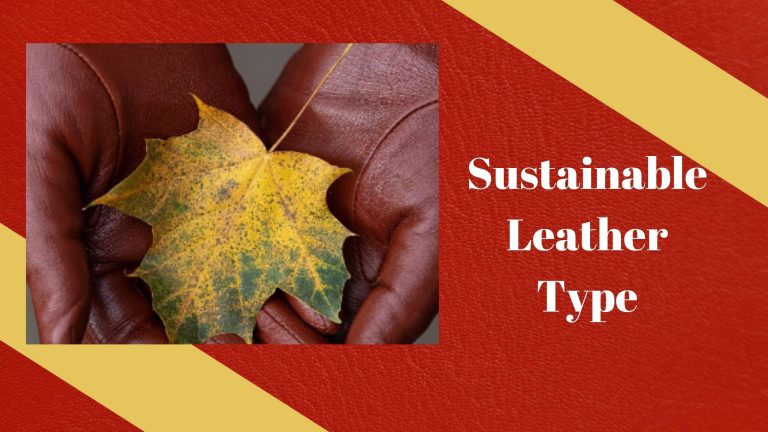Full-grain and top-grain leather have different markets.
When it comes to popularity, full-grain leather products are popular among high-net-worth individuals (HNWI), leather enthusiasts, and people who collect high-quality rare leather items as a hobby. The products made from this leather are usually luxurious, like high-end furniture, premium handbags and footwear, and interiors of luxury automobiles.
Top-grain leather products are popular among middle-to-upper-middle-class consumers, fashion-conscious consumers, and people who buy leather products for everyday use. The products made from this leather type have polished surfaces and are used to produce everyday products like stylish handbags, durable wallets, and furniture.
Full-grain leather products are more durable than top-grain leather. The latter has a more polished and uniform surface than the former.
These are just a few reasons to know when choosing the right type of leather products for needs because each leather has different features and characteristics.

What is Full-Grain Leather?
Full-grain leather is the highest quality leather available, as the natural grain and the imperfections like scars and blemishes on animal skin are not altered during the processing.
Pros:
Durability –
They are made from the top layer of the animal hides, making them durable. This leather can also withstand rough use and daily wear and tear.
Natural Look –
This leather has the natural look of animal skin because it is processed less than other leather types.
Patina Development –
Its surface develops a patina as the leather ages. This one feature of the full-grain leather makes it look more aesthetic and appealing to the buyers’ eyes.
Cons:
Higher Cost –
This leather type is the purest form of leather because the raw material is extracted from the top layer of the animal skin. This one feature makes the leather more expensive, as they are used in making only premium-quality goods.
Requires Maintenance –
The products made from this leather contain natural grains and imperfections of the animal skins and need regular care and conditioning to maintain their appearance and longevity.

What is Top-Grain Leather?
Top-grain leather is high-quality as it is made from the layer just below the top or full-grain layer of the hide. They have less grain and imperfections compared to full-grain leather and their surface is sanded and buffed to make it uniform.
Pros:
Smoother Finish –
They have uniform surfaces and appearances as they pass through additional processing to remove all the imperfections of the animal skin.
More Affordable –
The products made from top-grain leather are less expensive and more easily affordable to a broader range of consumers. This type of leather has a good balance of quality and cost.
Cons:
Less Durable –
This leather type is the second-highest leather after full-grain. They are less durable due to the removal of the natural grain layer.
Don’t Develop Patina –
Top-grain leather products don’t develop a patina as they age because they are sanded to achieve a uniform look, which removes much of the natural grain and texture that contribute to patina formation.

Key Difference Between Top Grain and Full Grain
There are some key differences between both leather types that you should know:
Aspect | Full-Grain Leather | Top-Grain Leather |
Durability | – Exceptional natural strength | – Less robust due to additional processing |
Appearance and aesthetic | – Natural imperfections and variations | – Refined and uniform appearance |
Cost Considerations | – More expensive | – More affordable |
Ideal Uses for Each Type
You should choose full-grain over top-grain if you are looking for features like durability, premium quality, and natural appearance in leather.
Best Applications for Full-Grain Leather:
- It has exceptional durability and a natural appearance that makes it ideal for luxury furniture, chairs, and other furniture pieces.
- This leather type ages gracefully by developing a patina on its surface with time. This one feature makes this leather ideal for premium handbags, designer wallets, and belts.
Best Applications for Top-Grain Leather:
- They are more affordable than full-grain leather. They have a polished and smooth surface, which makes them well-suited for stylish handbags, belts, and wallets.
- This leather is used in mid-range furniture like sofas and chairs, offering a more sophisticated and uniform look.
Maintenance Tips for Both Types of Leather
Full-grain and top-grain leather are made from the best layers of the hides, and each requires specific care to maintain its leather quality.
How to Care for Full-Grain Leather:
- Dust off the dirt or grime from the leather through a soft, dry cloth.
- You can use a damp cloth with a mild cleaner specifically designed for full-grain leather for deep cleaning.
- Apply a thin layer of conditioner in a circular motion on the leather every 6–12 months to keep the leather soft and supple.
- Protect full-grain leather products from direct sunlight, as it can damage the surface.
- Quickly clean the stains on the leather. For tougher stains, use a suitable cleaner.
Maintenance Tips for Top-Grain Leather:
- Use a soft, dry cloth to remove dirt and debris from the leather.
- Apply a thin layer of conditioner in a circular motion on the leather every 6–12 months to keep the leather soft and supple.
- Top-grain leather products can lose their luster if they come in direct contact with sunlight. Protect them by keeping them in a cool, dry place.
- Spot clean spills and stains with a clean, dry cloth. Use a suitable cleaner in case of stubborn stains.

Which Leather type is More Sustainable?
Full-grain leather is considered more sustainable than top-grain leather due to its minimal processing and exceptional durability. Because full-grain leather undergoes less chemical treatment and retains its natural surface, it has a lower environmental impact from tanning. Its long lifespan means that products made from full-grain leather can last for decades, reducing the need for replacements and minimizing waste.
On the other hand, top-grain leather involves more processing, such as sanding and buffing, which often requires additional chemicals and treatments, resulting in a higher environmental footprint. While top-grain leather is also durable and can last many years with proper care, increased processing can make it less sustainable compared to full-grain leather.
The Bottom Line
Full-grain and top-grain leather are genuine types of leather and do not inherently contain synthetic materials. However, each leather has some differences because they differ in their processing and appearance.
The former leather retains the natural grain and imperfections from the animal skin as they are less processed compared to the top-grain leather. The latter has a smooth and polished surface because they are sanded and buffed heavily to remove all the imperfections. This process of sanding and buffing the leather leaves behind only a few natural grains, reducing the durability and longevity of the leather when compared to full-grain leather.
Both types of leather have unique qualities and features, making them suitable for different applications and audiences.
